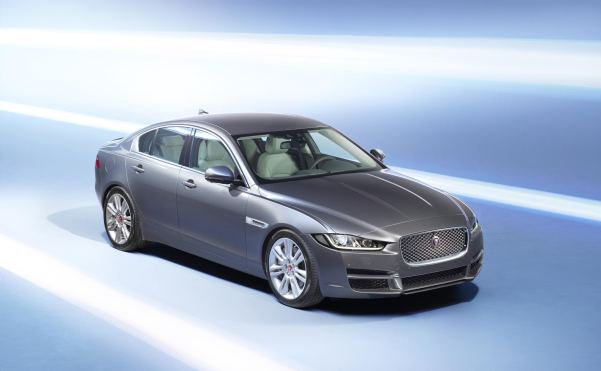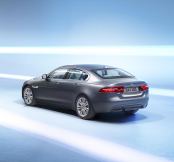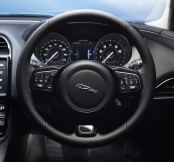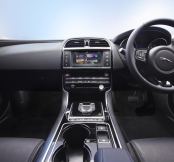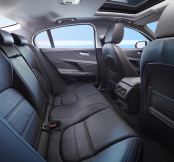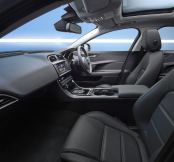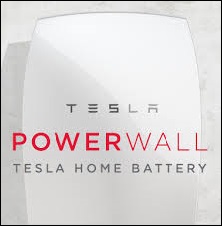Jaguar names its price on 3-Series rivalling XE
2014-11-26 06:10:55
Jaguar has revealed the pricing and specification details of its brand new XE saloon, Britain’s rival to the German trio of Audi A4, BMW 3-series and Mercedes-Benz C-class. The entry-level petrol model costs £26,995 whilst the cheapest diesel version is £29,775. The Jaguar XE was first unveiled at a glitzy multi-million launch event held in London’s Earls Court earlier in September.
The most affordable diesel BMW is the 316d which starts at £25,575 – so the Jaguar is already carrying a hefty premium of £4,200. Conversely, the lowest priced petrol-engined BMW is the 320i which can be put on the road for £29,070 - £2,075 in the Jaguar’s favour.
The entry-level petrol model secures you a SE-specced 197bhp 2.0-litre turbocharged 4-cylinder which is used in both the larger XF and XJ models. In the XE it officially returns 37.7mpg and emits 179g/km of CO2. A more powerful version of the same engine – this time with 237bhp – is also available further up the range and this manages to shave off around a second from the 0-62mph sprint.
The most power petrol engine model currently will be the 335bhp 3.0-litre V6 XE S which weighs in at £44,870 but offers you up to 332lb ft of torque. That will enable you to get to 62mph from a standing start in 5.1 seconds before going on to an artificially limited 155mph.
All petrol XE’s come with a ZF 8-speed automatic gearbox as standard. We know from first-hand experience that this is a cracking gearbox. Power will be transferred to the rear wheels.
But it is the diesel engine models that will be of most importance to British buyers where the fleet market will account for the majority of sales.
The entry level diesel is a 161bhp 2.0-litre turbocharged diesel unit which comes from the highly-acclaimed ‘Ingenium’ family of modular engines produced by JLR (Jaguar Land Rover) at their brand new plant in Wolverhampton. It can officially return 75mpg on the combined cycle and emit just 99g/km making it road tax-exempt. The BMW 320d Efficient Dynamics model produces almost the same level of power but emits 109g/km of CO2.
Like the entry level petrol engine, the 2.0-litre engine diesel is also available in a higher 178bhp output. It is able to produce 316lb ft of torque and is able to return 67.3mpg and match the BMW 320d ED with its emissions of 109g/km of CO2.
Both of the 2.0-litre diesel engines come mated as standard to a 6-speed manual gearbox, but that 8-speed automatic that we waxed lyrical about a little earlier is also available as an option. Like the petrol, power will be transferred to the rear wheels.
The slippery shape of the XE has contributed to the competitive efficiency figures detailed above. It is the most aerodynamic Jaguar ever built with a drag co-efficient of just 0.26. The efficiencies have also been made possible due to plenty of lightweight aluminium being featured in its construction.
Standard equipment includes an 8-inch touch-screen which hosts the satellite navigation and DAB digital radio. A laser head-up display is available as an option and Jaguar claims it is the brightest ever offered on a production car.
Jaguar has also confirmed that it has no plans to downsize Jaguar any further at this stage saying that the XE ‘completes’ the company’s line-up. This will dash any hopes there may have been about a future Jaguar rival to the BMW 1-series.
This is an abridged article written by First4Auto for EcoCars4Sale only.
Reported By
Andrew Merritt-Morling
Chief Editor





